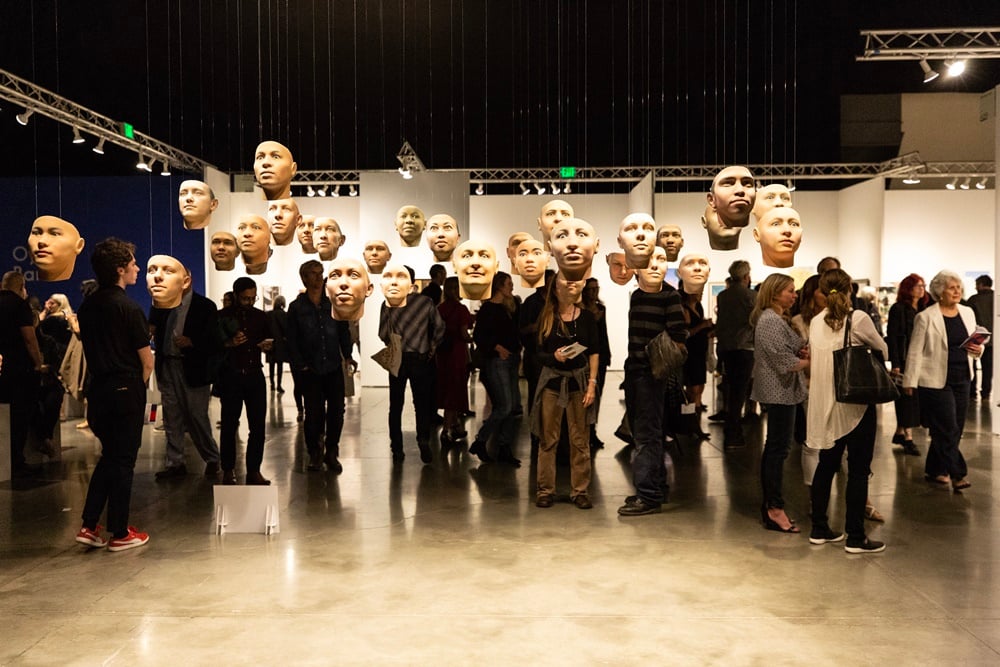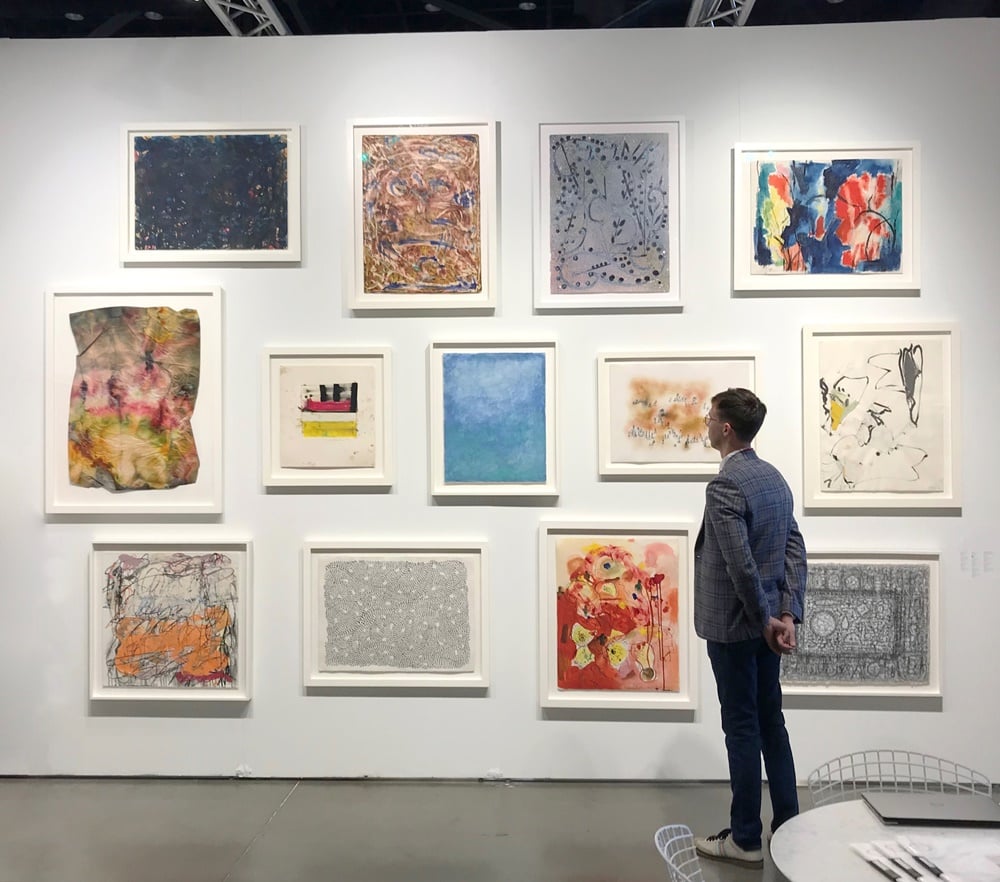Art Fairs
Some Top Dealers Skipped the Seattle Art Fair, But Solid Sales for Repeat Galleries Illustrate the Rewards of Choosing Fairs Wisely
Dealers stress quality over quantity when it comes to Seattle buyers.

Dealers stress quality over quantity when it comes to Seattle buyers.

Eileen Kinsella

What happens when a mechanism under unprecedented scrutiny—the art fair—collides with an emerging market for which the art world has (possibly unreasonably) high hopes? The answer is the Seattle Art Fair, which closed its fourth edition to the public on Sunday. The occasion reflected growing pains in dealers’ evolving approaches to both the event-driven art market in general and Seattle in particular, which is home to a considerable number of tech millionaires and billionaires, but comparatively few major-league art collectors.
In a pressure-cooker like this, it’s not surprising that impressions of the event varied. Organizers of this year’s fair boasted “strong sales and high public engagement,” while some observers grumbled that they had traded quality for size. (There were more galleries than in the 2017 edition, putting the largest-ever total at 106, a move some complained diluted the caliber of exhibitors and resulted in a less focused display.) Notably, several major players, including Pace and Perrotin, did not return for this year’s edition.
The shifting exhibitor list is representative of a moment when many dealers are taking stock of their spending and priorities. “Given the the time and the money it takes to participate in a fair, I’d rather focus on some of these other avenues of production which feel experimental, and exciting,” Sharon Arnold of the Seattle-based gallery Bridge Productions told artnet News of her decision not to return.
“We know that gallery programs and priorities evolve from year to year, and so will the make-up of our participants,” said the fair’s director Max Fishko. “We have been very lucky to work with some of the very best galleries in the world and look forward to continuing these relationships.”
Powerhouse galleries David Zwirner and Gagosian, on the other hand, returned to the fold once again. Each had a prominent booth at the entrance to the fair. Meanwhile, the event’s new artistic director Nato Thompson drew praise for his program of cutting-edge special projects led by top contemporary names (as well as an epic robot performance-art battle) that enlivened the atmosphere.
Another sign of the fair’s growing establishment in the region is its new $25,000 fund to support the acquisition of works from the fair by the Frye Art Museum’s new contemporary council. The museum selected a work by Toyin Ojih Odutola from Tamarind Institute of Albuquerque and another by Ellen Lesperance from Adams and Ollman of Portland.
The VIP opening reception felt a bit quieter than last year, but dealers we spoke to emphasized the importance of quality over quantity. “We felt this year we were able to come back to a community we have a growing relationship with and that resulted in stronger sales,” said David Zwirner director Robert Goff. “There was a mix of both new collectors and familiar faces.”
Sales at the Zwirner booth included a new sculpture by Carol Bove as well as multiple works by Wolfgang Tillmans and R. Crumb. Prices ranged from $10,000 to $450,000.
Gagosian’s Beverly Hills director Deborah McLeod was pleased with the sales but less sanguine about the local collector base. “We wrote far more invoices this year than we have in past years, but, surprisingly, few works sold to Seattle collectors,” she said. “It is honestly a puzzle that, in a region with so many great collections and wild success in so many business sectors, we don’t leave more art in Seattle.”
Los Angeles gallerist Charlie James, who had success with five-figure works last year, embraced the same approach this time around. “We’re doing our ‘hit singles’ strategy and it’s working very well,” he said. He showed work by William Powhida, Sadie Barnette, Ramiro Gomez, and David Feldman.
By Saturday, he told artnet News: “We’ve sold 20 pieces so far—every one so far under $2,000.” Buyers included the collection of Microsoft, the collection of Paul Allen’s firm Vulcan, and to local institutions. “I’m really happy to be up front next to Zwirner too—that’s nice,” he added. “We don’t have to look at any suspect artwork all week.”
Seattle dealer Greg Kucera was also pleased with demand, noting the sale of all four works on display by artist Anthony White within a half-hour of the opening (for about $2,500 each), as well as a pair of rare Jacob Lawrence prints to a new collector, and a portrait by the LA-based artist John Sonsini ($10,000) to a major New York collector who is a longtime client and came specifically for the fair.
Galerie Lelong & Co. of New York was another high-profile returning exhibitor. Partner and vice president Mary Sabbatino agreed the VIP opening was less crowded than in the past but noted that “the key people were there from the collectors and museums. It’s not crowds that make a fair like this one, but support from the community.”
Sabbatino said that following a slow start, the gallery placed a Jaume Plensa sculpture and a Mildred Thompson painting in local collections as well as a large Ursula von Rydingsvard drawing and some smaller works. “Though the majority of the sales were to existing clients, it is important to keep engaging your loyal audience with new works,” she said.

Michael Rosenfeld Gallery at Seattle Art Fair, featuring works by Norman Bluhm, Alfonso Ossorio, William T. Williams, Alma Thomas (Top Row); Sam Gilliam, Alfred Leslie, Beauford Delaney, Norman Lewis, Grace Hartigan (Middle Row); Michael Goldberg, Claire Falkenstein, Hans Hofmann, Richard Pousette-Dart (Bottom Row). Courtesy of Michael Rosenfeld Gallery LLC, New York, NY.
New York-based Michael Rosenfeld Gallery participated in the fair for the third consecutive year. “By close of the fair on Sunday, the result was very positive with collectors returning over the weekend and finalizing purchases,” Rosenfeld told artnet News. He describes the fair as “an unusually good fit” for the gallery since its focus on sometimes overlooked 20th-century masters “dovetails with the passions of several local collectors.”
Sales included paintings, sculpture, and works on paper by artists including Claire Falkenstein, Sam Gilliam, Norman Lewis, Alma Thomas, and William T. Williams.
The jury is still out on whether the fair will be able to lure back other dealers that have strayed, and whether it can make itself equally beneficial for large and small dealers alike. “I’ll definitely consider coming back again next year, or pursuing fairs outside the region,” said local dealer Sharon Arnold. “But if I’m honest, I wonder what the long-term impact of fairs will be on our ecosystem. Especially on the smaller end of that ecosystem which is far more fragile, but also precious, as most of us serve our communities as incubator spaces… for artists that ultimately get picked up by larger galleries.”
Asked if Zwirner, one of those aforementioned larger galleries, plans to return next year, Robert Goff replied: “Seattle, and the West Coast in general, is a culturally significant place. Seattle has a booming economy and is very much pointed at the future. I think the tech community is slowly coming to a deeper appreciation of and interest in art and collecting. Patience will pay off—and it has already.”